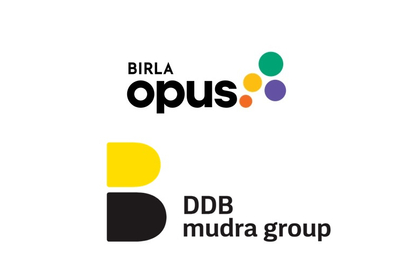
Michael Follett, senior VP-strategy and planning, DDB Mudra shared the following presentation with Campaign India.
I’ve had to trawl through a bunch of trends presentations recently, desperately trying to find something useful to help me out on a pitch. It hasn’t been that helpful. But it has taught me a bunch about trends presentations. Which I humbly submit for your consideration.
Most trends presentations come in the form of a list. Is there a lazier form of thought than the list? It’s like anti-thought. Instead of analysing and prioritizing the information at your disposal, the list format allows you to dump a whole load of crap on your audience’s lap and leave them to deal with it. Of course, practitioners of the list format will claim that they are ‘just making statements and leaving their audience to draw their own conclusions”. Oh yeah? Well, draw your own conclusions from this statement: “Fuck off.”
The list format does communicate some very important information to the audience. And that is: “This guy is an idiot. You should not take what he says seriously."
-
There’s an accepted visual style with most trends presentations: big, beautiful, largely irrelevant photos sourced from Flickr with simple, portentous headlines announcing fashionable banalities. The Flickr photos are meant to make a point in themselves. The medium is the message. Meta, man. The point is that we now live in a crowd-sourced, digitally-distributed society in which we are all creators of our own destiny. Brands and institutions that don’t ‘get it’ will inevitably wither and die: technology is putting consumers and citizens in charge, baby, and if you don’t like it, there’s nothing you can do about it. Er, tweeting Mr Ahmadinejad? Is there a Mr Ahmadinejad in the building? PSFK says you’re needed in the dustbin of history. What’s that? You don’t want to come? But you want me to come down to the police station with you? OK, then.
What these trend clowns don’t realise is that the internet is the single greatest gift to autocracy in human history. Stalin was once described as Ghengiz Khan with a telephone. Can you imagine what Ghengiz Khan would do with all your private information on Facebook? Oh right, we don’t have to guess. We have Mark Zuckerberg.
-
Advertising planners used to be nerds. They were the numbers guys, or at least the making-sense-of-the-numbers guys. Paul Feldwick, the planning guru of BMP in London, made his first great contribution to planning by noticing a data period anomaly in Dairy Council sales figures. Yeah, I don’t know what that means either, but it sounds like work. Work with numbers. Christ.
Nowadays, planners don’t know how to add up, and certainly can’t spot when the numbers don’t add up. This can make things pretty uncomfortable when they run up against people who do understand numbers. But that’s okay: modern planners can retreat into a cosy, touch-feely, numberless world of trends, dismissing the quant jocks as ‘autistic’ - ha ha ha, mental illnesses make great insults.
-
In a world of Google, there really is no excuse to get quotations wrong anymore. Don’t. Do. It.
But it’s interesting to see who does get quoted, or at least misquoted. Twain leads the field, but I get the impression that he led his life with the express intention of saying every thought imaginable in every possible combination of words. It may be that he did, in fact, say everything. But he also ‘said’ the whole of a Connecticut Yankee at the Court of King Arthur. And every word of that is terrible. So, okay, perhaps he said your quote, but your quote is shit.
Clay Shirky, CK Prahalad and that guy from the US Patent Office who said that everything that could invented had been invented by 1888 are all tied for second. Which certainly leaves an enduring image in the mind.
. -
And no, they aren’t listening. Most of these trends presentations are delivered to audiences comprised of a mix of two differently deaf types of people. The first type are people like me: snarky ad men too busy thinking of what they are about to say next to listen to your nonsense. The other group of people mid-level marketing executives on a jolly, happy to get out of their cubicles for once. They will listen and nod to everything you have to say about the death of TV advertising and how you’re audience isn’t listening to ‘Big Brand Ideas’ any more. But then they will ignore you and put all their money into TV. And you know what? They’re right, and you’re wrong. Despite what you say, people are watching more and more TV, and they love stuff like ‘Hungry Hungry Hippos’ which is as big a Big Idea as you can get. How ironic.
-
Almost all these presentations have one serious thing to say. Here’s mine. I think that part of the problem with ‘trend thinking’ is a confusion between what ‘is’ and what ‘ought’ to be. The planners who give these sorts of talks want a whole load of things to be true. They want the world to be becoming more democratic. They want a mass efflorescence of creativity. They want the world to be tougher for the big guys and easier for the hungry young start-ups. The problem is that none of this is true. The world is a hard, horrible place, and no amount of wishful thinking is going to change that. What will change it is if you confront these problems head on and solve them efficiently and equitably. And that’s where trends presentations could be helpful: they could point out the difficulties that people will face, and how companies and institutions could overcome them. Instead there is a confusion between an ‘ought’ and an ‘is’. Your average trends presentation ‘ought’ to be usefully truthful but actually ‘is’ a waste of everyone’s time.
-
Trends presentations suffer from a number of additional…oh good God, I can’t face it. OK, so there’s a whole bunch of ill-digested and inappropriate Literary Theory in lots of trends presentations, which is, er, a very bad thing and, er, so on. And neologisms. Oh God, the neologisms. Christ, they are awful. But The Onion has done something funny about that, so I don’t need to mention it. But has anyone else noticed the word ‘gism’ at the end of neologism? You have? Okay. I’ll stop now.
-
Thanks very much for your attention. You’ll have noticed that all seven trends culminate neatly in me asking you for a job. So gissa job. Gissa job, mister. It’s hot out here. I need the air conditioning. Gissa a job.






.jpg&h=334&w=500&q=100&v=20250320&c=1)
.jpg&h=334&w=500&q=100&v=20250320&c=1)


.jpg&h=334&w=500&q=100&v=20250320&c=1)





.jpg&h=268&w=401&q=100&v=20250320&c=1)




.jpg&h=268&w=401&q=100&v=20250320&c=1)
.jpg&h=268&w=401&q=100&v=20250320&c=1)
.jpg&h=268&w=401&q=100&v=20250320&c=1)
